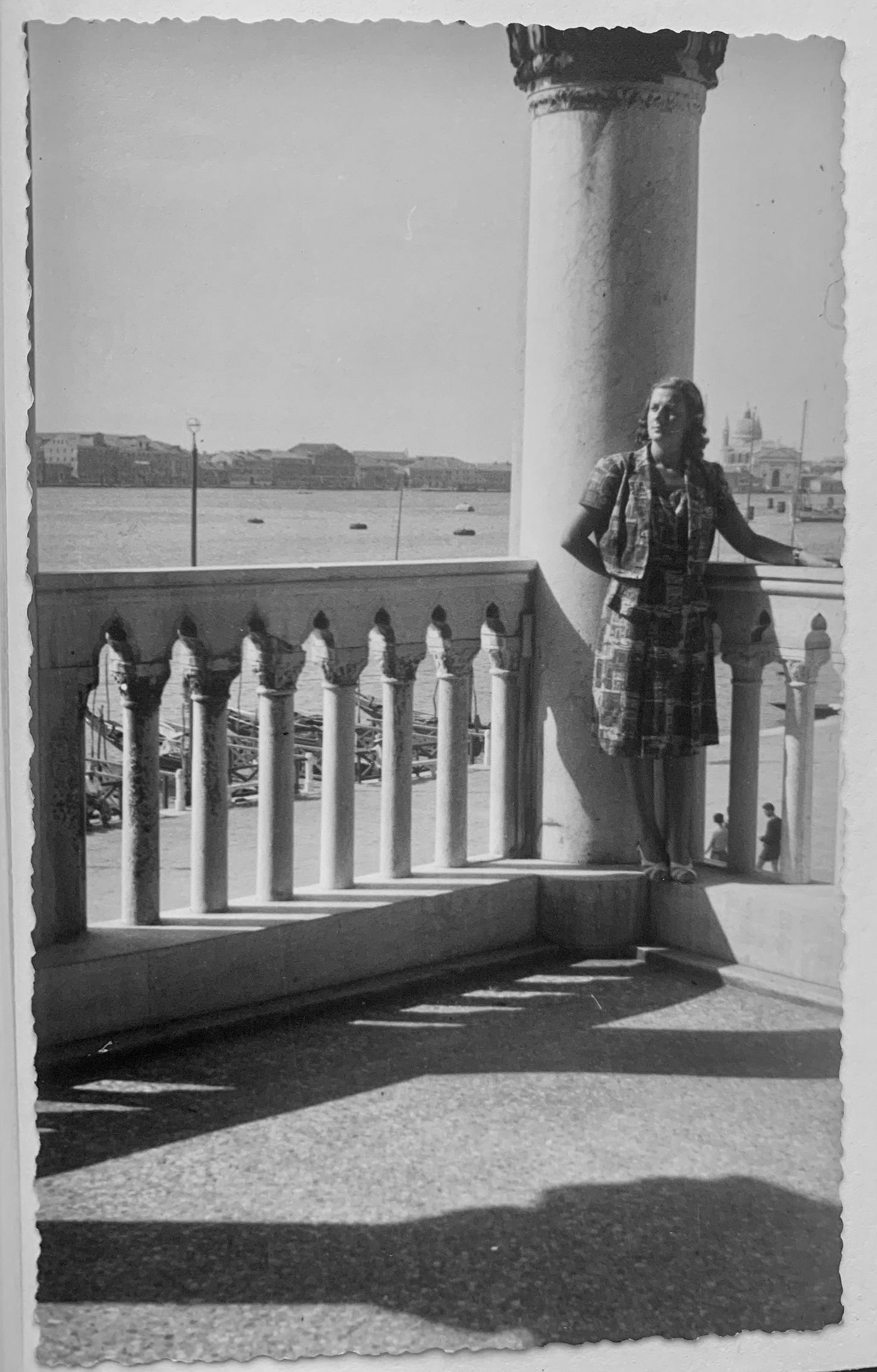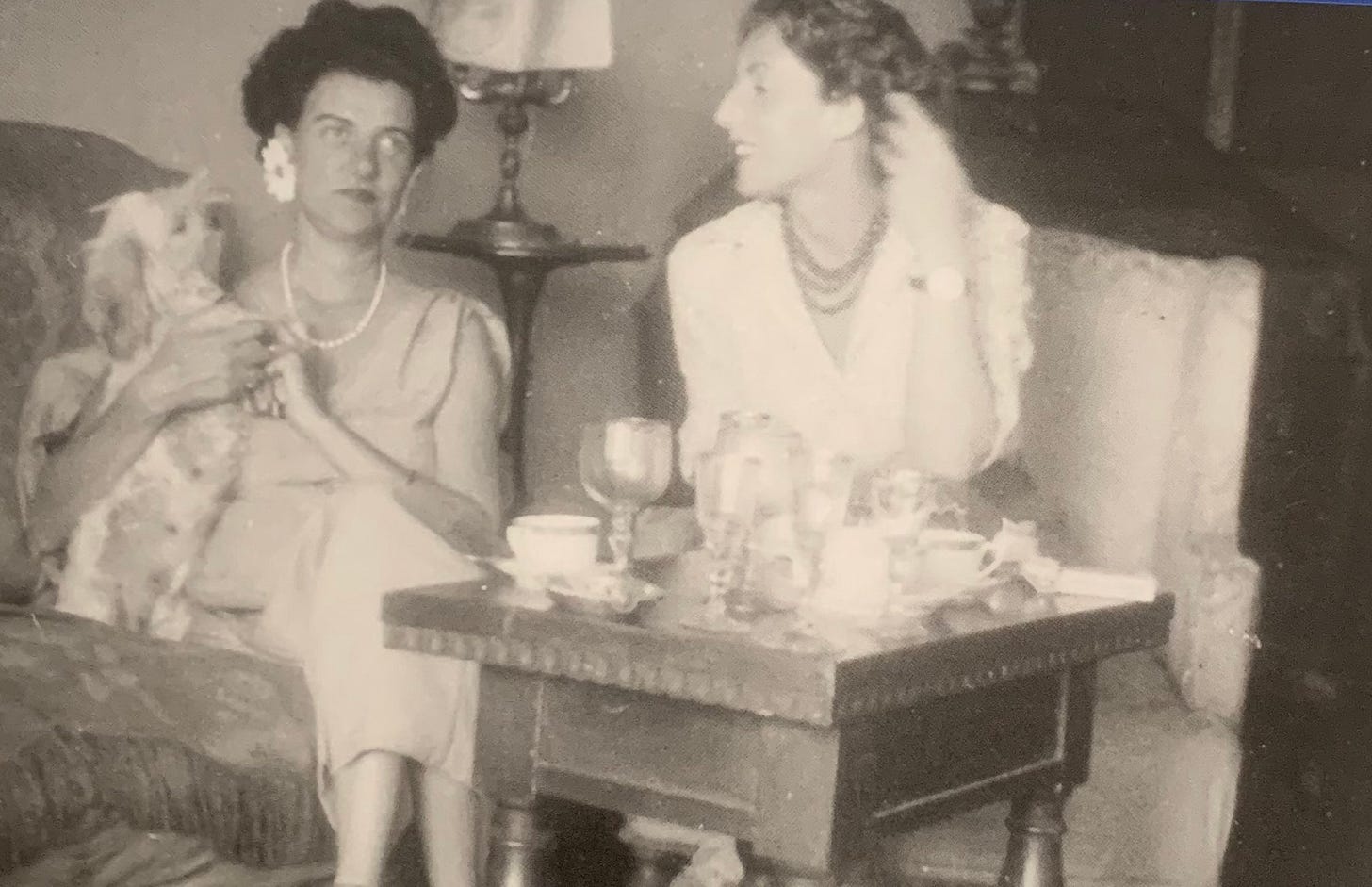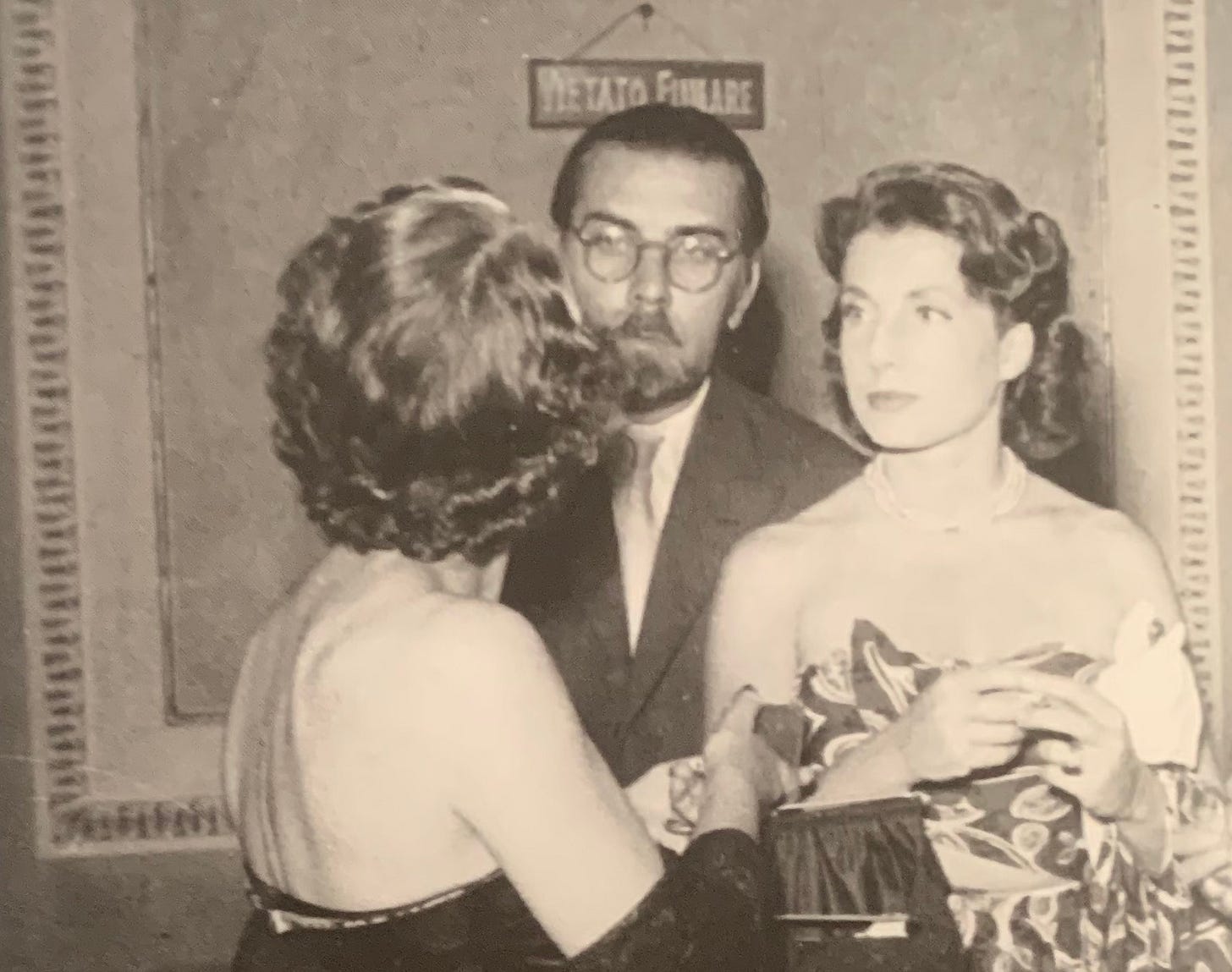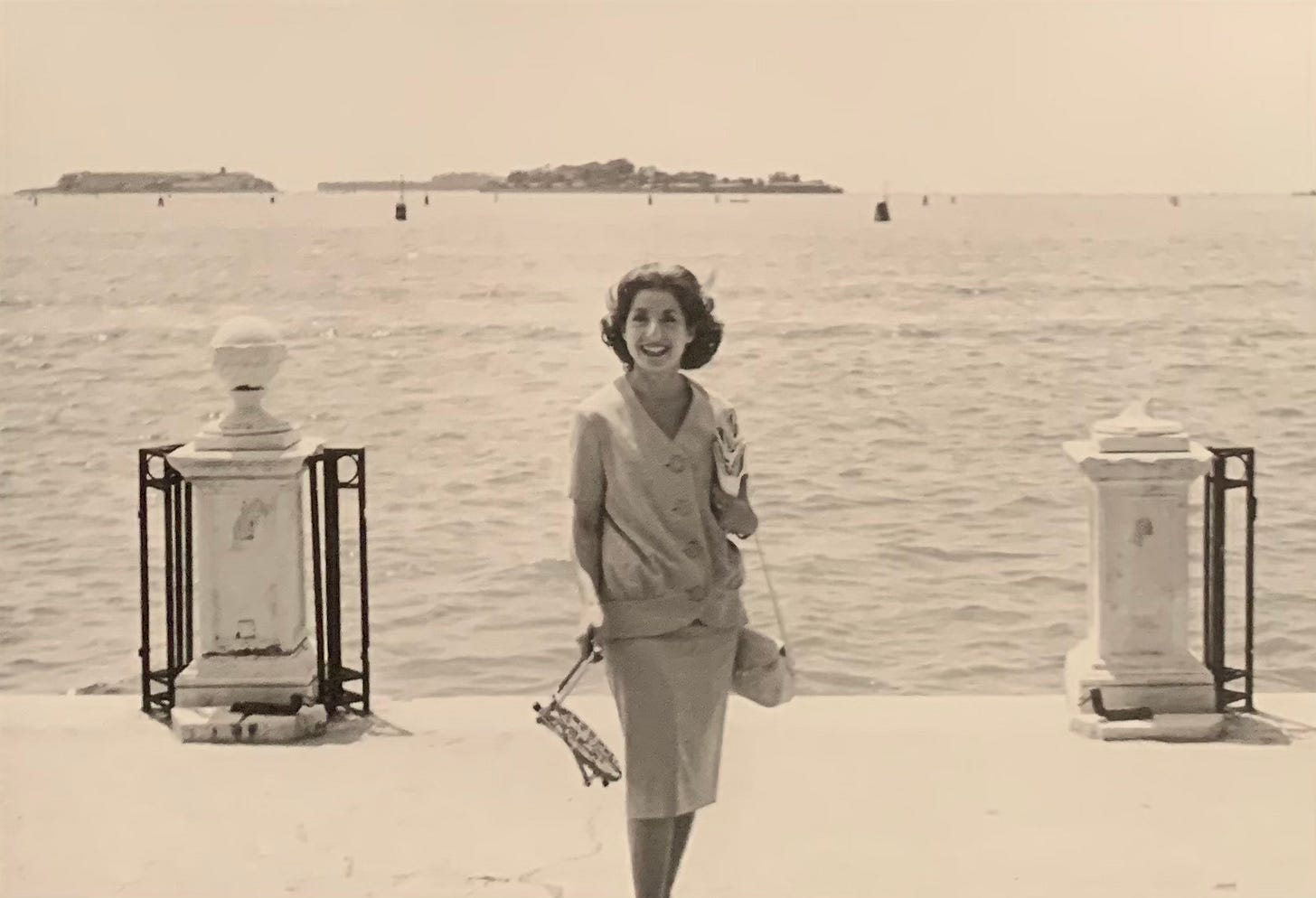Venice Biennale has finally started, the floods of the art world have gained every bacaro of the city holding spritzes, bellinis and cicchetti, sharing their first impressions (and criticism?) of the national pavilions (“haven’t you seen the French one? Simone Leigh in the US pavilion?”), the Arsenale (“yes, Cecilia Vicuña’s work resonates with this year’s theme”) and the numerous collateral events (“Negozio Olivetti featuring Fontana x Gormley is worth the queue”).
And while I take note of all the comments and the suggestions until my visit to “La Mostra” in June (not without a small FOMO feeling that might perdure until then), I took the time to look at some of my grandmother’s pictures in Venice. Her Venetian holidays made me think about a legendary figure considered by many as one of the “queens” of the Venice Art Biennale in the second half of the 20th century - before you jump to conclusions, no, I’m not talking about Peggy Guggenheim (I would have said THE queen) -.
I am referring to Palma Bucarelli, who was an art historian and, from 1940 to 1975, director of the first contemporary art museum in Italy, the Galleria Nazionale d’Arte Moderna e Contemporanea in Rome, more often simply called, La Galleria1.
Since the 1940s, Palma was a prominent figure on the Roman cultural and social scene, carrying out with elegance and tenacity the arduous task of directing a museum that had to be revived after years of nationalist management. Over the years, her abstract preferences and exhibition choices caused quite a few scandals in the political and intellectual world of the time.
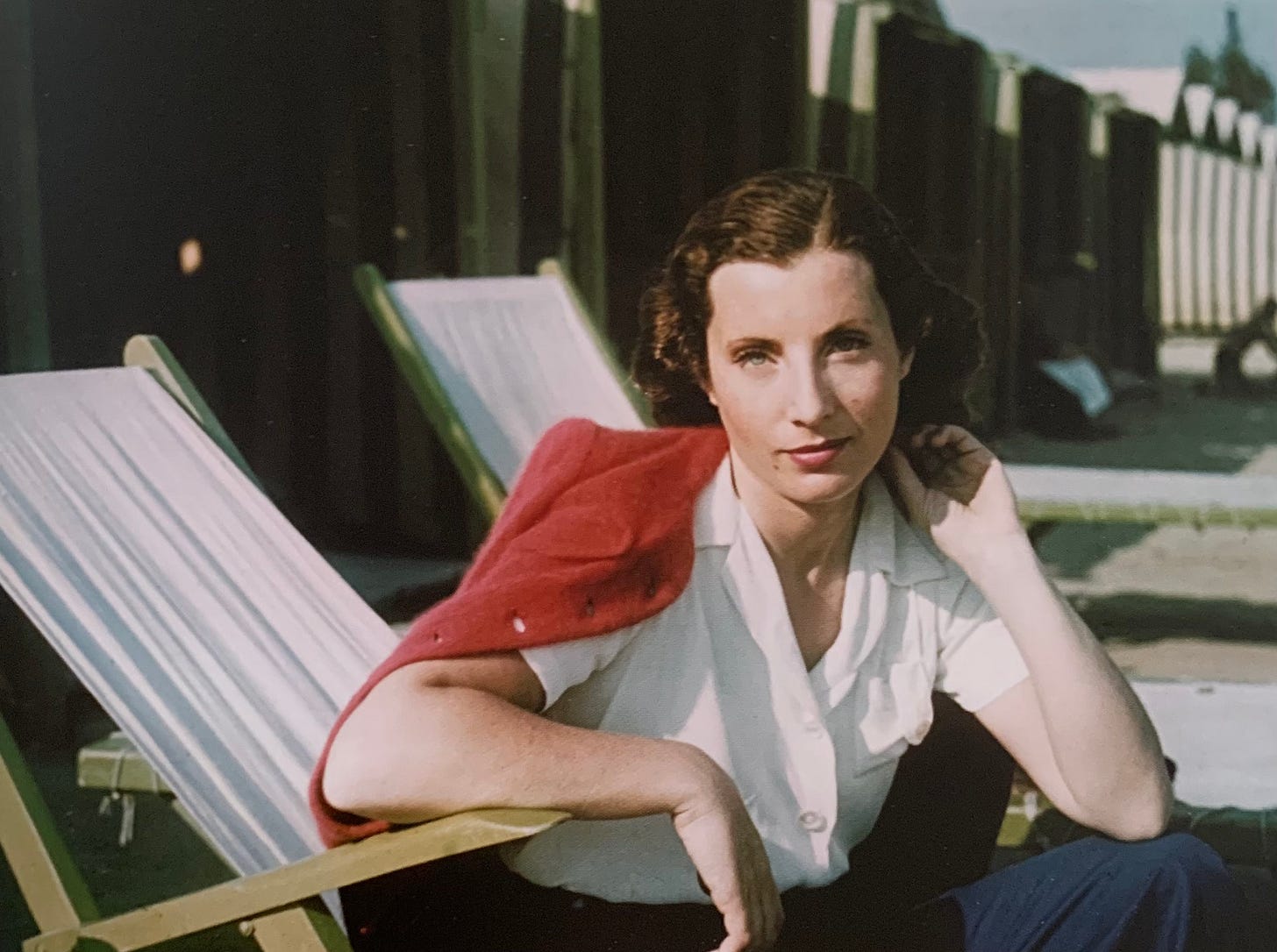
In this picture taken in 1937, Palma is shown in one of the first photos documenting her long and repeated stays in the lagoon. She was not yet appointed as director of the Galleria, but she already expressed her great love for the city in a letter to her partner, Paolo Monelli: “The exhibition is unspeakably beautiful and it keeps me busy all day, even though Venice gives me many temptations. Even just riding in a gondola and looking around, with this clear sky and this splendid sun. Many times I see it and many times this city moves me".
In October of the same year, on the occasion of the great Tintoretto exhibition at the Ca’ Pesaro, she wrote: "this Tintoretto, this sort of devilish force that has sprung up on this heavenly earth, is truly terrible. He comes out with his eyes dazzled and his spirit in tumult [...]. Tintoretto does not give you peace, he shocks you, dazzles you, and disconcerts you. You're on edge all the time and not even when you get home can you calm down.”
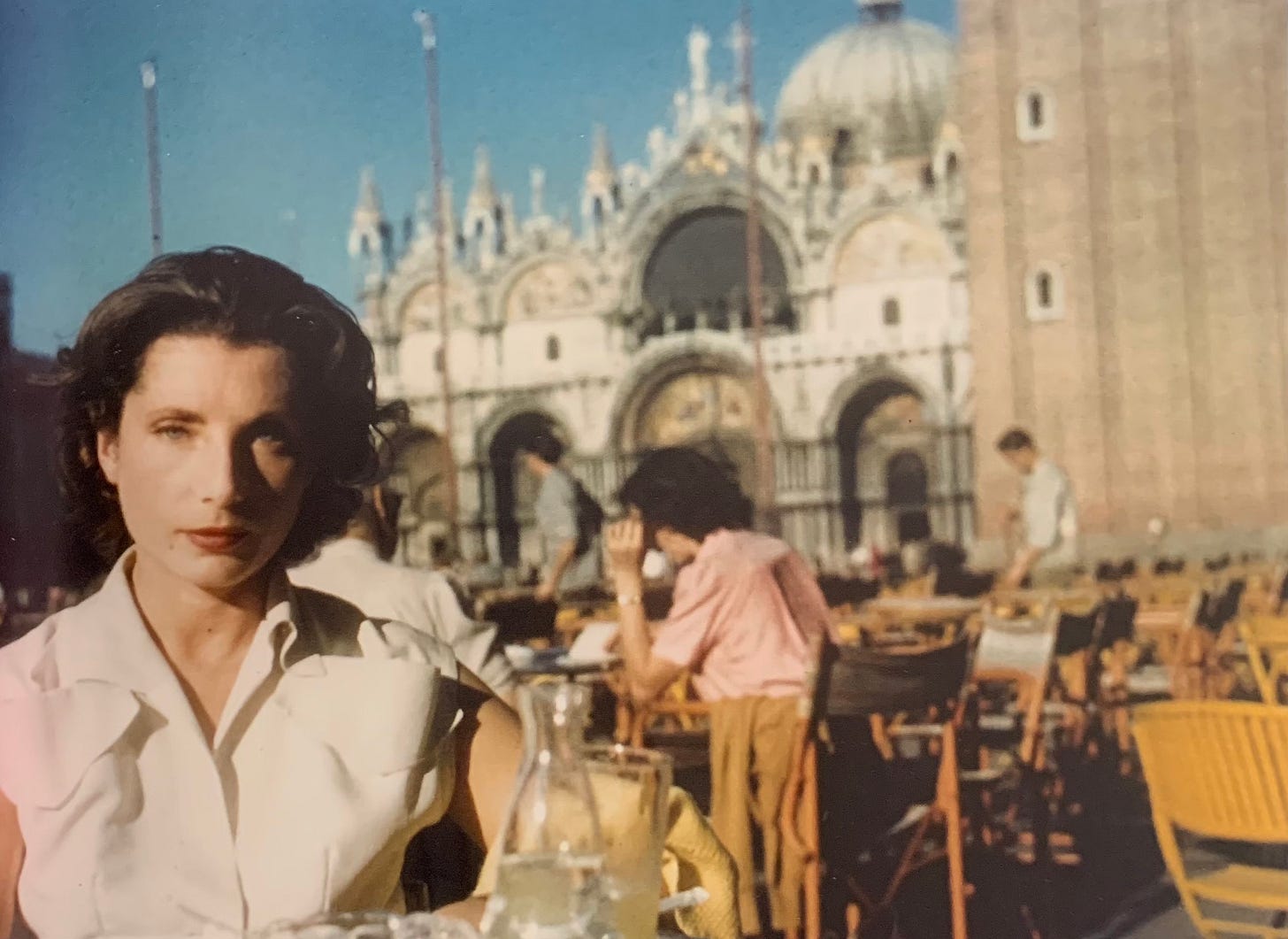
Venice was not only the city of the Biennale, the International Film Festival, Bellini, Giorgione, Tintoretto, Tiepolo, and the great worldly life, it was also where so many artists and friends lived and worked. After 1940, when she was finally appointed as director of the Galleria, her visits to the Biennale became a valuable opportunity to supplement and enrich the collections of the museum with the works by foreign artists. The acquisitions were made following the budget set by the Ministry, which Bucarelli always judged insufficient to update the museum’s collections and insert the Galleria into the international cultural scene2.
Amidst successes and controversies, the imperative in Bucarelli’s management was that "a modern art museum may be institutionally national, but it is, and can only be, culturally international".
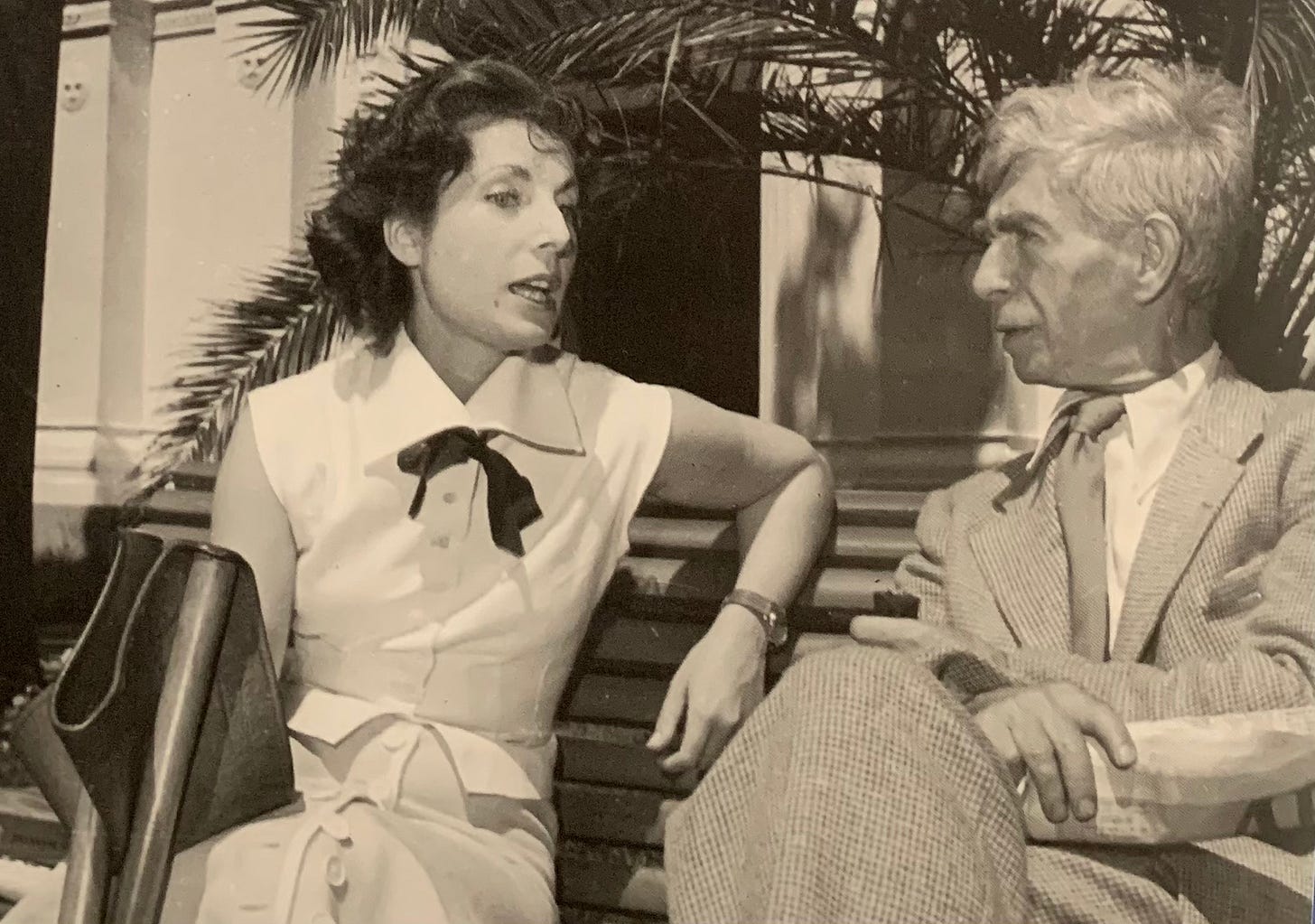
Her many political friendships made her Venetian days interesting and proficuous. In a letter, she recalls the meeting with Comm. Baradel, the right-hand man of Antonio Mariani, influential and powerful general secretary of the Biennale from 1927 to 1942: “He is the one who has been organizing exhibitions for years, one after the other, and especially the Biennale. He knows all the artists, their deaths and miracles. Now they have a lot to do for the preparation of the next Biennale as, up until now, they have been occupied with the exhibition of modern Italian art that will take place in Berlin.”
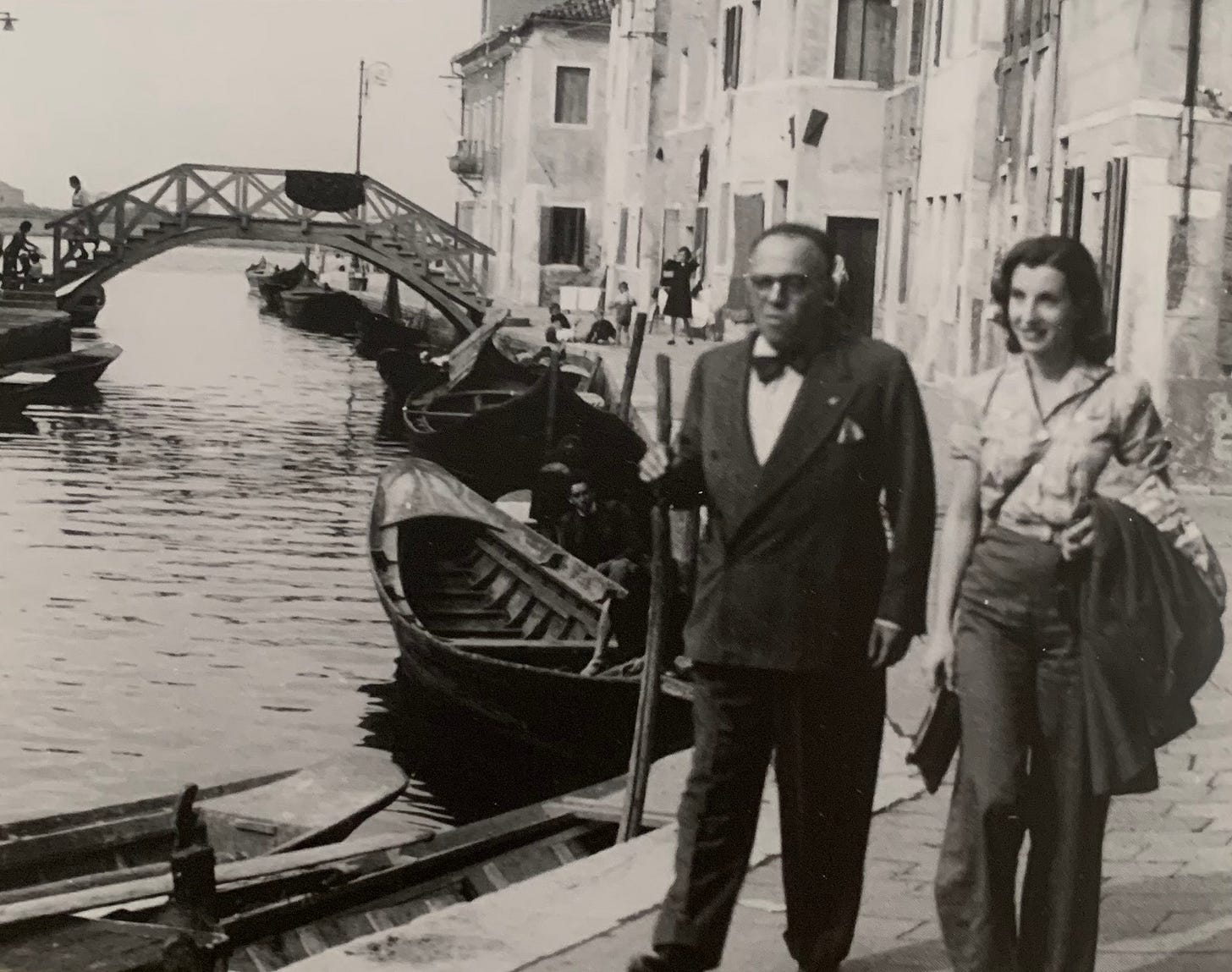
Many anecdotes and gossip have accompanied her numerous stays in Venice. Palma was very brilliant and most certainly beautiful, which made the gossip so much more interesting. Taking great pride in her social achievements in Venice, in May 1940 she wrote to Monelli: “I have just come back from the Biennale and left my friends waiting for me at the Florian. […] Tonight I’m dining with Levi […]. I know everybody here now and they all cheer me on and take me very seriously”.
In a rare 1948 photo of Palma Bucarelli and Peggy Guggenheim, the billionaire American collector based in Venice. The rivalry between the two was well known (but perhaps exaggerated by mundane gossip?): Bucarelli had allegedly failed to exhibit Guggenheim's collection at the Galleria (truly against Palma’s will, she was prevented from doing so by then Minister Gonella). The dispute would later escalate due to a misunderstanding regarding the exhibition of a Pollock painting that had come from the Guggenheim collection. In reality, Peggy was an assiduous and enthusiastic visitor of the Gallery, as can be seen from the photos taken at the vernissages of the family collection’s exhibition Masterpieces from the Guggenheim Museum in New York in 1957 and the De Stijl retrospective in 1960.
There was no shortage of social occasions where Palma flaunted outfits of the utmost elegance, always accompanied by the most important figures of the time. Writers, industrials, and ministers animated the salons and events frequented by Bucarelli.
It is said that she was often (elegantly) late for dinner and made extravagant menu demands. Journalist Montanelli recounts how at a dinner with artists and intellectuals at La Colomba restaurant during the 1952 Biennale, Palma casually asked for a prawn rice curry (an absurd request in 1950s Italy), and, to the amazement of the waiter and diners, went on to give a detailed explanation of how the dish could be made.
Proust’s Madeleine
This section is called Proust’s Madeleine, and it presents a general mix in which you should indulge to get transported to new worlds or old cherished memories…just like the French pastry did for Marcel Proust.
Since this month’s newsletter was quite long (and took quite some time to get into your inbox, sorry for that!) I will only give you one more tip:
I have recently discovered My Art Guide Venice 2022, a very smart app (and website) that allows you to create a map and agenda of all the Biennale events, both official and collateral, extremely useful if you just have a few days to roam the city.
And for now, that is all!
Feel free to respond to this email with suggestions or opinions and, if you liked it, share it with a friend!
Until next time,
Alice
All quotes and pictures come from: Rachele Ferrario, Regina di quadri. Vita e passioni di Palma Bucarelli, Milan, Mondadori 2010 and Lorenzo Cantatore, Edoardo Sassi, Palma Bucarelli: immagini di una vita, Palombi, 2011.
To have a more precise idea of what Bucarelli bought for the Galleria: Giorgia Cicalini ‘Palma Bucarelli e La Biennale Di Venezia (1948-1968)’ Storie Dell’arte Contemporanea, 2019.




